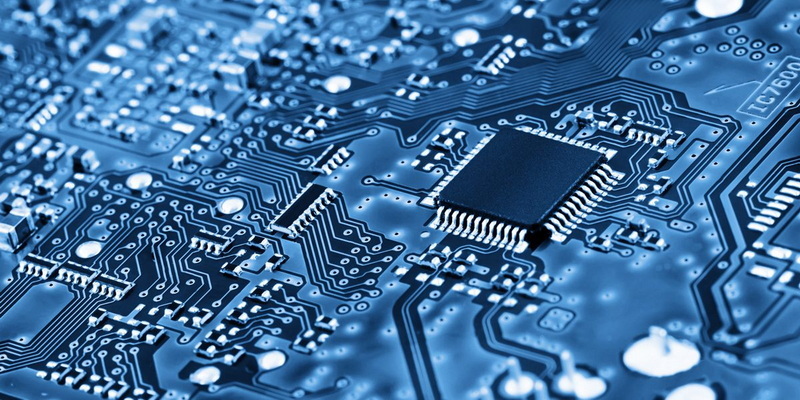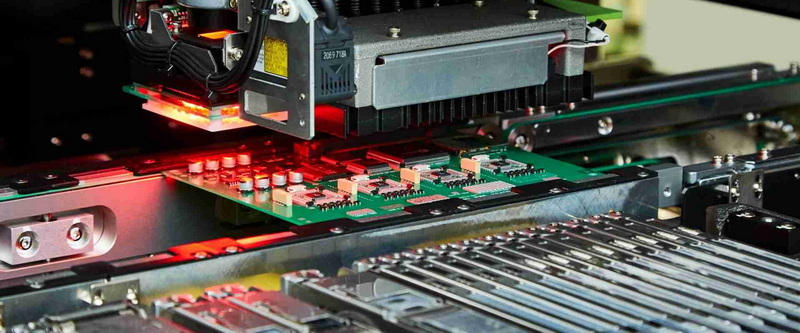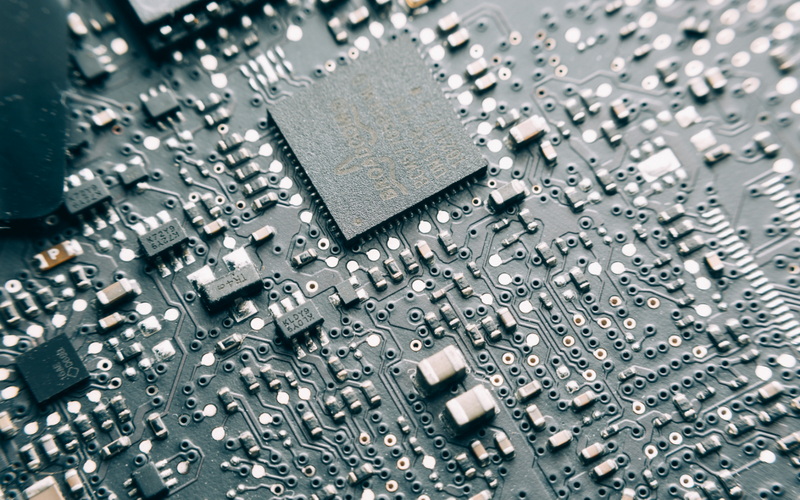Content Menu
● Introduction
● What are SMT Components?
>> Types of SMT Components
>> SMT Component Packages
● Advantages of Using SMT Components
>> Size and Weight Reduction
>> Cost-Effectiveness
>> Improved Performance and Reliability
>> Design Flexibility
>> Automation and Efficiency
● Applications of SMT Components
>> Emerging Applications
● Challenges and Considerations
>> Limitations of SMT Components
>> Factors to Consider in SMT Assembly
>> Quality Control Measures
● Future Trends in SMT Technology
>> Miniaturization Trends
>> Advanced Materials
>> Increased Automation
● Conclusion
● FAQ
>> 1. What is the difference between SMT and through-hole technology?
>> 2. How do SMT components improve electronic device performance?
>> 3. What are the cost benefits of using SMT components?
>> 4. Can SMT components be used in all types of electronic assemblies?
>> 5. What are the common challenges in SMT assembly?
● Citations:
Introduction
Surface Mount Technology (SMT) components have transformed the landscape of electronics assembly. By allowing components to be mounted directly onto the surface of printed circuit boards (PCBs), SMT facilitates the creation of smaller, lighter, and more efficient electronic devices. This article delves into the reasons why SMT components are increasingly favored in modern electronics assembly, examining their advantages, applications, and the challenges they present.

What are SMT Components?
SMT components are electronic parts designed to be attached directly to the surface of PCBs. Unlike traditional through-hole components, which require leads to be inserted into holes drilled in the board, SMT components utilize a flat design that allows them to be soldered onto the PCB surface. This innovation enables a more compact and efficient layout for electronic circuits.
Types of SMT Components
Common types of SMT components include:
- Resistors: Used to limit current flow.
- Capacitors: Store electrical energy temporarily.
- Integrated Circuits (ICs): Complex circuits encapsulated in a single package.
- Diodes: Allow current to flow in one direction only.
- Inductors: Store energy in a magnetic field.
These components come in various packages, including chip resistors, chip capacitors, and leadless chip carriers, each optimized for specific applications.
SMT Component Packages
The packaging of SMT components plays a crucial role in their functionality and application. Some common SMT component packages include:
- 0805 Resistor/Capacitor: A standard size used widely in consumer electronics.
- 0603 Resistor/Capacitor: Smaller than 0805, ideal for compact designs.
- QFN (Quad Flat No-lead): Offers excellent thermal performance and is used for high-performance ICs.
- BGA (Ball Grid Array): Provides high-density interconnection for complex chips.
Understanding these packages is essential for engineers when designing PCBs that accommodate specific component types.
Advantages of Using SMT Components
Size and Weight Reduction
One of the most significant benefits of SMT components is their smaller size compared to through-hole alternatives. This reduction in size not only allows for lighter devices but also enables manufacturers to design more compact products. The ability to fit more components into a smaller area leads to enhanced portability and convenience in consumer electronics.
Cost-Effectiveness
Utilizing SMT components can result in substantial cost savings. The automated assembly process reduces labor costs and increases production speed, making it an ideal choice for high-volume manufacturing. Additionally, the smaller size of SMT components often leads to lower material costs because less raw material is required for production.
Improved Performance and Reliability
SMT components typically offer better electrical performance due to shorter lead lengths that minimize signal delays. This is especially critical in high-frequency applications where performance reliability is paramount. The automation involved in SMT assembly also enhances quality control, ensuring consistent product reliability.
Design Flexibility
SMT technology allows for greater design flexibility. Components can be placed on both sides of a PCB, enabling intricate designs that were previously challenging or impossible with through-hole technology. This flexibility supports innovative product designs that meet evolving consumer demands.
Automation and Efficiency
The highly automated nature of SMT assembly processes reduces human error and increases efficiency. Automated pick-and-place machines can quickly position thousands of components on a PCB with precision, significantly speeding up production times compared to manual assembly methods.

Applications of SMT Components
SMT components are widely used across various industries due to their numerous advantages:
- Consumer Electronics: Smartphones, tablets, laptops, and wearable devices benefit from the compact designs enabled by SMT technology.
- Automotive Industry: Modern vehicles incorporate numerous electronic systems reliant on SMT components for functionalities like infotainment systems and safety features.
- Telecommunications: High-speed communication devices and infrastructure utilize SMT technology for efficient performance.
- Medical Devices: The miniaturization of medical equipment such as hearing aids and diagnostic tools is made possible by using SMT components.
Emerging Applications
In addition to traditional uses, new applications for SMT components continue to emerge:
- Internet of Things (IoT): As IoT devices proliferate, the demand for small, efficient electronics has surged. SMT technology is crucial in developing these compact devices that often require wireless communication capabilities.
- Wearable Technology: Devices such as smartwatches and fitness trackers rely heavily on SMT components due to their size constraints and need for lightweight materials.
- Smart Home Devices: Home automation systems utilize a variety of sensors and controllers that benefit from the space-saving advantages of SMT technology.
Challenges and Considerations
Despite their many advantages, there are challenges associated with using SMT components:
Limitations of SMT Components
Not all electronic components are available in SMT form. Certain applications may still necessitate the use of through-hole components for mechanical strength or specific performance criteria. For instance, power resistors or large capacitors often require through-hole mounting due to their size or thermal management needs.
Factors to Consider in SMT Assembly
Proper design practices are essential to avoid issues such as solder joint defects or thermal stress during assembly. Engineers must ensure that PCBs are designed with adequate thermal management solutions.
Key considerations include:
- Thermal Management: Effective heat dissipation is critical for maintaining component reliability. Engineers should consider using thermal vias or heat sinks where necessary.
- Solder Paste Application: The application process must be precise; too much or too little solder paste can lead to defects such as bridging or insufficient solder joints.
- Component Placement Accuracy: Accurate placement is vital for ensuring proper connections between components and pads on the PCB.
Quality Control Measures
Implementing robust quality control measures during the assembly process can mitigate potential issues associated with SMT technology:
- Automated Optical Inspection (AOI): This technique uses cameras to inspect PCBs after assembly, identifying defects early in the production process.
- X-ray Inspection: For complex assemblies like BGAs where joints are hidden from view, X-ray inspection can verify solder integrity without disassembling the device.
Future Trends in SMT Technology
The future of SMT technology looks promising with several trends shaping its evolution:
Miniaturization Trends
As consumer demand continues towards smaller devices with higher functionality, manufacturers will focus on developing even smaller SMT component packages while maintaining performance standards. This trend will likely lead to innovations in materials science and manufacturing processes.
Advanced Materials
The development of new materials that enhance conductivity while reducing weight will play a crucial role in future SMT component design. Flexible substrates may also become more prevalent as wearable technology advances.
Increased Automation
Automation will continue to evolve within the electronics manufacturing sector. As artificial intelligence (AI) becomes integrated into production lines, processes will become more efficient with reduced error rates through machine learning algorithms that optimize assembly operations.
Conclusion
In conclusion, choosing SMT components for electronics assembly offers numerous benefits including size reduction, cost-effectiveness, improved performance, and design flexibility. As technology continues to advance, the role of SMT will become increasingly vital in meeting the demands of modern electronics manufacturing. The ability to produce smaller, lighter, and more efficient devices makes SMT an essential component of contemporary electronic design and production strategies.

FAQ
1. What is the difference between SMT and through-hole technology?
SMT involves mounting components directly onto the PCB surface without drilling holes, while through-hole technology requires leads to be inserted into drilled holes. This difference allows SMT to create more compact designs.
2. How do SMT components improve electronic device performance?
SMT components reduce signal delays due to shorter lead lengths and enhance overall electrical performance. The automation used in their assembly ensures consistent quality across products.
3. What are the cost benefits of using SMT components?
SMT reduces material costs due to smaller component sizes and lowers labor costs through automated assembly processes, making it a cost-effective choice for high-volume production.
4. Can SMT components be used in all types of electronic assemblies?
While most applications can utilize SMT components effectively, some may still require through-hole parts for mechanical strength or specific design needs.
5. What are the common challenges in SMT assembly?
Common challenges include solder joint defects and thermal stress issues that require careful design considerations and precise assembly techniques to ensure reliability.
Citations:
[1] https://vectorbluehub.com/smt-assembly
[2] https://levisonenterprises.com/5-advantages-to-using-smt/
[3] https://www.sonicmfg.com/what-are-the-advantages-of-surface-mount-technology-in-pcba/
[4] https://www.mpe-electronics.co.uk/2024/10/22/advantages-and-disadvantages-of-surface-mount-technology
[5] https://geospacemfg.com/blog/smt-assembly-technology/




















